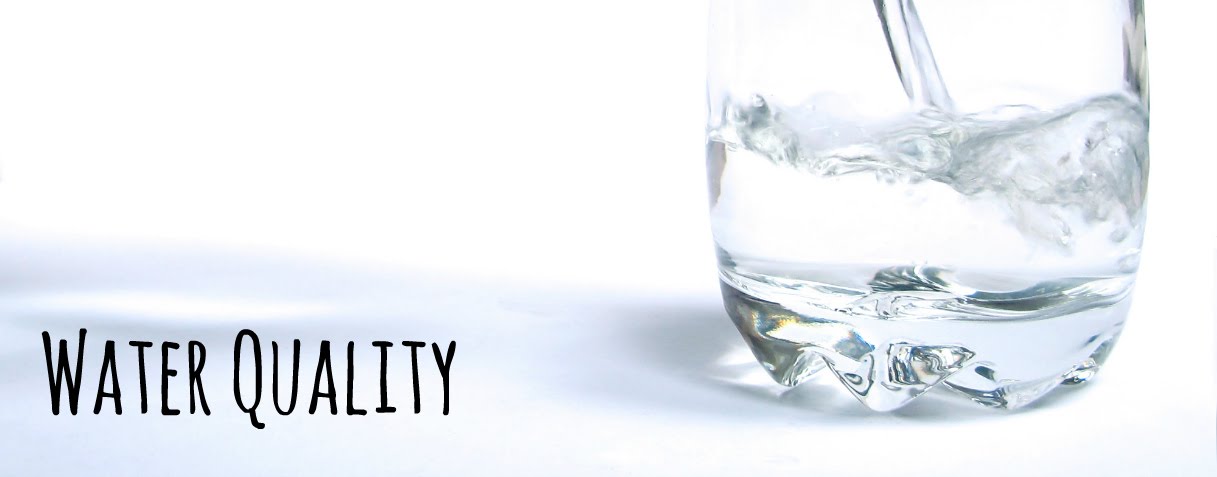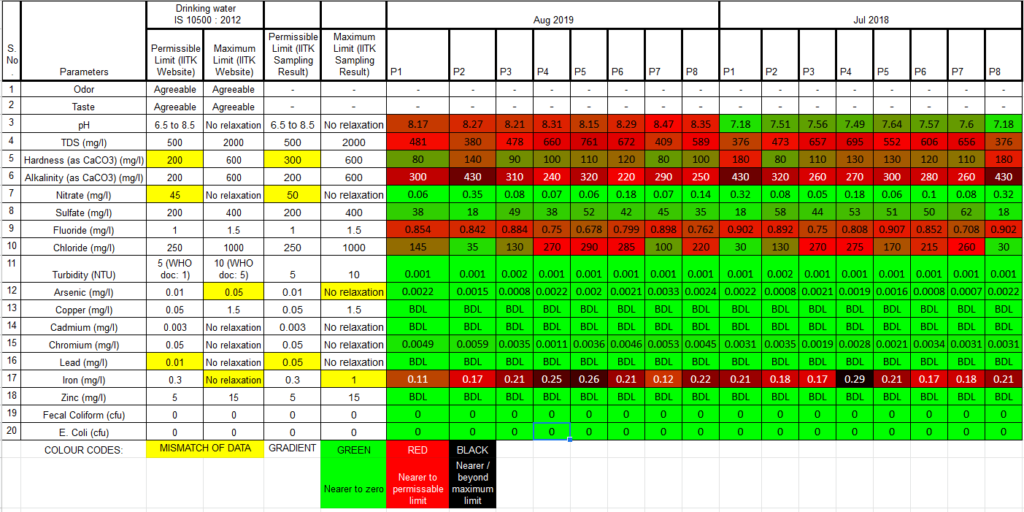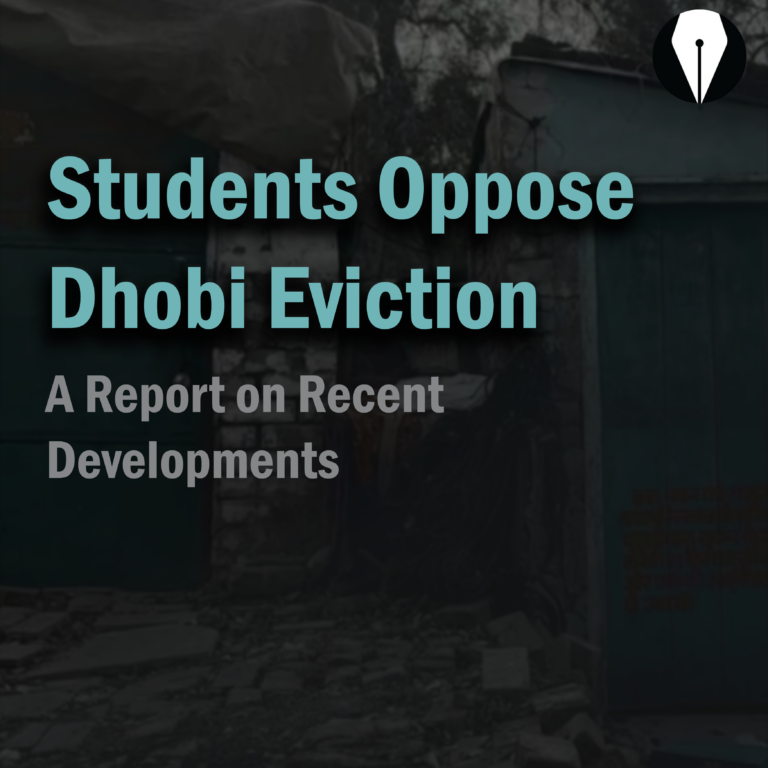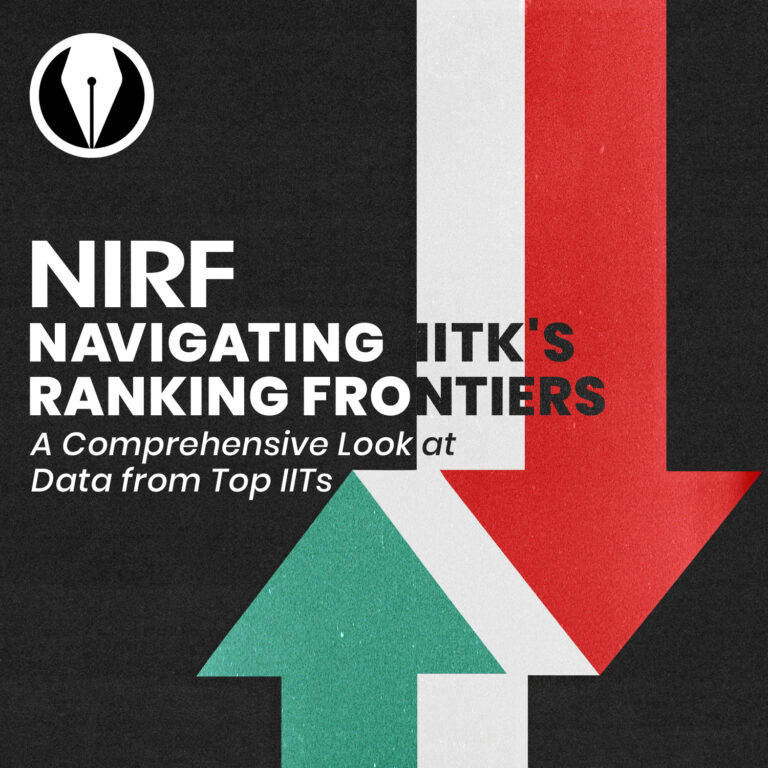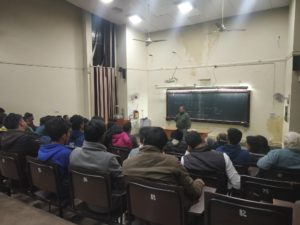Access to safe drinking water is essential to health and a basic human right. The increasing reliance on mineral water bottles hints towards a general dissatisfaction with the taste or the quality of water available at our disposal. A number of instances of water-borne diseases further made us think if the water available to us is actually fit enough?
In an attempt to understand the issue, we went around and collected water samples and analyzed them alongside WHO and BIS standards. We followed it up with discussions with relevant people. Here, we put forth a brief of what we learned.
What is considered safe or good water?
Let us first understand the term ‘good water’. There are two aspects to it- one psychological and the other physical.
The psychological aspect is about one’s subconscious acceptance of the water one’s drinking. “Objectionable taste or odor may be regarded by consumers as unsafe and rejected. In extreme cases, consumers may avoid aesthetically unacceptable but otherwise safe drinking water in favor of more pleasant but potentially unsafe sources. It is therefore wise to be aware of consumer perceptions and to take into account both health-related guideline values and aesthetic criteria when assessing drinking-water supplies and developing regulations and standards.” – Guidelines for Drinking Water Quality, World Health Organisation (See Acceptability Aspects on page 219)
The physical aspect is concerned with the presence of certain chemical and biological matter that makes water harmful for consumption. We shall consider the standards laid down by the Bureau of Indian Standards in their latest revision of the Drinking Water – Specifications document. The document has provided two limits- an Acceptable limit, and a Maximum Permissible Limit, which is only valid in the absolute absence of an alternate source of water.
Water Quality in numbers
Now, let’s have a look at how the water quality data of the Institute Works Department (IWD) holds up against these standards-
IWD Link- http://iitk.ac.in/iwd/wq/waterquality.htm
Some notable observations:
- The standards mentioned on the IWD website do not match with the ones given alongside the data published in their monthly reports.
- Both the standards as provided with IWD (one on their site, and one alongside their data) apart from having mismatching cases are inconsistent with the standards laid down by the Bureau of Indian Standards.
- The parameters of the water samples as tested by the IWD lies beyond the Acceptable Limit in TDS readings, alkalinity and amount of chlorides.
- The parameters of the water samples as tested by the IWD are very close to the border limit in the case of pH values, fluorides, and iron content.
- Lack of public opinion of the taste and the acceptability of the water.
The best way to learn about something is to do it. So, Vox bought a TDS meter and went around a few places to collect drinking water data. Unsurprisingly, these were a few results-
| Place | TDS(in ppm) | Place | TDS (in ppm) |
| Hall 1 – A and B wings | 779 | Hall 2 – Mess | 572 |
| Hall 1 – outside mess | 744 | Hall 2 – RO outside mess | 435 |
| BSBE building | 106 | Hall 2 – RO in C wing | 162 |
Does the water quality on campus reflect in increasing water-borne diseases?
We approached the Health Centre staff with this question. While they did not agree to reveal the exact numbers on the same, they said, “Water quality influenced diseases are associated with metallic, salt-based and biological contaminants. Specifically, microbial impurities trigger the more common diseases among students like diarrhea, hepatitis A, and worm related infections. However, supposedly the water available on campus is biological matter free.”
Is installing ROs a probable solution?
An institute level drive to install ROs seems an obvious solution, right? We consulted Mr. Snehil Saluja, President, Hall of Resident 12, to understand the process involved and the challenges involved.
Problem– Installing ROs in half of the wings one by one took over a year. One of the biggest challenges in managing the waste water generated in the process. For every litre of processed water, four litres of water are wasted. Harvesting this impure water is a challenge.
Expenditure– The expenditure for installing ROs is completely taken from DCF (Dean’s Capital Fund). HEC submits a proposal including complaints about water quality, TDS reports, number of ROs required and other valid reasons for the need of ROs in the DoSA office and if it is approved, HEC gets the required funds. The cost of installing one 40 litres RO system can be about Rs. 42000 to 50000.
Maintenance– For maintenance of these ROs, an AMC (Annual Maintenance Contract) is taken. Maintenance includes things such as cleaning of filters and keeping regular checks on TDS levels in the water. The first year of maintenance is covered under warranty and after that about Rs. 10000-12000 are required per RO for maintenance.
In conversation with DoIP
Finally, we approached the Dean of Infrastructure and Planning (DoIP) to understand the processes involved and challenges in the maintenance of drinking water.
There are three sources of water for us- Kanpur Municipal Corporation, groundwater, and rainwater. He says, “The institute has paid loads of money to the municipal corporation already, but they haven’t been able to set up a stable supply inside the campus and the quality of water they provide is deplorable too.” So, the water we are consuming, as of now, is mainly from the groundwater source (taken from a depth of around 1000 feet) which, he says, “is pure too since it is passed through high-pressure pipelines and isn’t treated with chlorine which is carcinogenic.”
He discouraged the installation of ROs in the halls and claimed that he will not be providing any funds for the same. ROs, as he says, lead to a huge loss of water and remove certain minerals required for the body too. For the same reasons, he opines, the National Green Tribunal (NGT) has already banned RO filters in Delhi and said that he wishes to implement the same in IIT Kanpur. He claims that the UV based filtering is good enough and he uses the same in his home.
The other source of water, that we as a campus need to stress more upon, is the rainwater. In the present scenario, rainwater harvesting is the need of the hour. Expressing his concern he says, “Since we might soon run into a water shortage, it is of extreme importance that we set up facilities for rainwater harvesting inside the campus. I have forwarded numerous proposals and attempted to do the same, but haven’t received financial support from the administration.” He urged the students to chip in as a community, come up with measures to save water and be economical in its usage. Rainwater harvesting is of utmost importance and we need to push for it.
Members- Abhimanyu Sethia, Akshit Kumar, Debaditya Bhattacharya, Manali Patil, Raj Varshith Moora, Sarvesh Bajaj
Editor- Aditya Sonthalia



